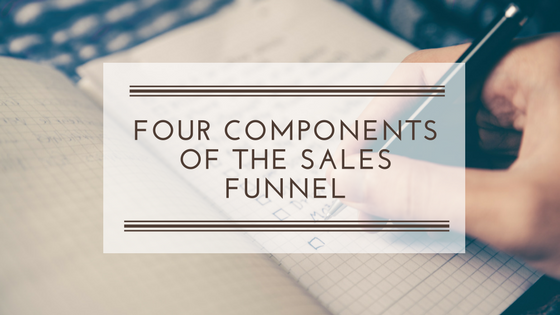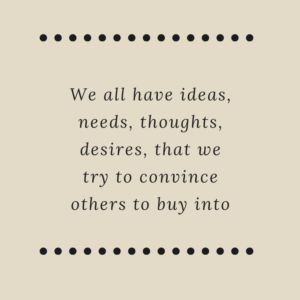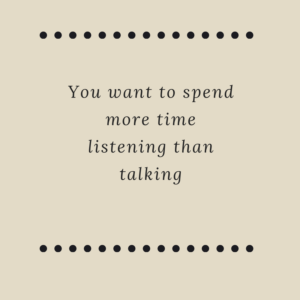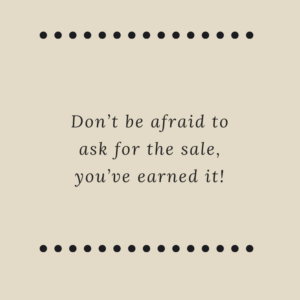Four Components of the Sales Funnel

If you think what you do for a living has nothing to do with sales, think again. There’s not much that doesn’t include at least some type of sales component. Your job title may not be “sales executive” but trust me, we all sell. Even if you’re not selling a specific product or service, I guarantee there are times during your day that you are attempting to sell something to someone. It could be personally or professionally but we all have ideas, needs, thoughts, desires, that we try to convince others to buy into. No matter what you do, there is something to be gained from learning the basics of a sales funnel.
So where do you start? High level – think about anyone and everyone who would benefit from what you’re selling. Then identify specific needs that you (or your product, service or idea) can help solve. After that, think about the type of person or company you want to sell to. Finally, based on these criteria, determine the likelihood of those entities engaging with you to buy. This is the beginning of your Sales Funnel. Start at the top and funnel your prospects through. A sales funnel has one purpose: to drive your prospects to make a buying decision.
There are many different types of sales funnels dependent on what is being sold. For our purposes, here, I’m going to share the 4 main components from top down. Prospecting, Cultivating, Positioning, Closing.
Prospecting: Identifying the right clients and opportunities. Otherwise known as lead generation.
When you’re simply looking for prospects (or suspects) you can have more of an open mind. Fill the top of your funnel with as many leads as possible. A few ways to do this:
- Referrals
- Networking
- Analytical data from your website
- Attending tradeshows
- Participating in professional organizations
This part of your funnel should always be the biggest and one that is being fed on a consistent basis. It’s where the magic begins, so to speak. In this step is also where you are going to determine if the prospect has the authority and money to close the deal. You simply cannot move on from here unless you know you’re not wasting your time. This doesn’t mean that the sale will be immediate, it may even take a year or two, but you don’t want to be spending your time or theirs on something that’s not a good fit.
Cultivating: Building strong relationships and uncovering client needs.
Remember, people are people no matter what and people are social creatures. We do business with people we trust. This part of the funnel usually takes the longest. There will be an investment of time on the part of both the buyer and seller. If you’re not comfortable with each other, then the prospect will most likely not become a customer. What’s important to remember in this step is that this is a two-way street. What you don’t want to do here is have one-sided conversations about how wonderful your service, product, or idea is. You really want to spend more time listening than talking. It’s about getting to know each other of course, but your job is to make sure you know just what the other person wants and how you can meet their needs. It is imperative that you do what you say you’re going to do. Whether it’s providing additional information, following up at a certain time, or going the extra mile. Trust is key.

Positioning: Demonstrating your value and developing innovative solutions.
You are the expert in what you do and you must make sure your prospects know it. Don’t be all wishy washy! Be bold and clear about it. Your expert story is critical. It connects you to your audience, establishes authority, and motivates action.
The Good – Share your personal stories of success as well as the stories of your successful clients and customers. It’s also great if you can share stories of other professionals that you’ve collaborated with to meet a client’s need.
The Bad – Don’t be afraid to tell your story, and don’t leave out a failure or two along the way. Sharing some of your struggles will allow people to relate to you. If you learned from it, then share it. This will set the stage for your description of your deep knowledge.
The Testimonials – It’s a good idea if you have some customers that have agreed to provide references. You can have previously written referrals ready to go as well as provide their contact info, if someone would like to give them a call.
Closing: Developing a compelling win/win proposal.
In all honesty, if you’ve done a good job with the previous steps, this part will be the easiest. There’s an old expression in sales that is summed up by 3 simple letters: ABC. This stands for “Always Be Closing.” What this means is that you shouldn’t save any closing questions. At this point, you know the prospect’s needs (or pain), you’re confident that they trust you and you know they have the budget for it. Use your professional expertise to create a proposal that you feel is the best you can do and present it.

Don’t be afraid to ask for the sale, you’ve earned it! How can we help you close your next sale?
Author
Related Posts
Marketing for Group Travel: Building Solid Relationships with Tour Operators
Group travel is a significant segment of the tourism market, and if you want to see those buses pulling up to the curb and filling…
Financial Benefits of Group Travel
Tourism is an economic engine. Pre-Covid, the economic impact of tourism was at an all-time high, generating $1.9 trillion in 2019 and supporting over 9.5…
